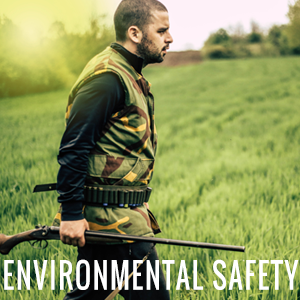Say “environmental justice” to police officers and you might hear cracks about “animal cops” in the woods, dressed in green, looking for poachers. Its mention with college students will likely prompt discussion about eco-activists and street protests directed at industry, government or both.
Whether law or potential lawlessness, disconnect between environmental social movements and government regulatory efforts lays in philosophy and approach toward the public’s best interests. The term “environmental justice” first appeared in the 1980’s. Its concepts, however, started with creation of the U.S. Forest Service in 1905 by President Theodore Roosevelt, followed by national parks, forests, preserves and monuments in 1906. Its importance was cemented in 1969 with establishment of the Council on Environmental Quality, a division of the Executive Office of the President, the Environmental Quality Improvement Act of 1970, and subsequent birth of the Environmental Protection Agency (EPA).
Over time, preservation, protection, conservation, renewal, and sustainability of natural resources grew into global approaches by both governments and environmental movements. As the world “shrinks” through advancements in technology, science, communication, travel, commerce, and healthcare, so do its natural resources. A more “connected” world reflects global concern over the environment in perspectives of profit, damage, renew-ability, and access to natural resources for disadvantaged populations. Seemingly simple challenges like access to clean water remain challenges in many parts of the world.
Governments and social movements either meet or diverge on common ground, environmental justice is defined by the EPA as:
“The fair treatment and meaningful involvement of all people regardless of race, color, national origin, or income with respect to the development, implementation and enforcement of environmental laws, regulations and policies”
U.S. Environmental Protection Agency (EPA)
In 1994, President Bill Clinton formalized environmental justice in the U.S. and directed Federal agencies work on the EPA mission of addressing “disproportionately high and adverse human health or environmental effects of their programs, policies, and activities on minority populations and low-income populations.”
Policy, politics, protestors, and police may collide and grab public interest, but everyday environmental law enforcement efforts continue largely unheralded. From National Zoological Park Police to Environmental Protection Agency (EPA) Special Agents, federal agencies have regulatory functions as varied as the interests they protect. At the EPA, regulation concentrates on four groups: air, water, waste/chemical/cleanup, and criminal.
Enforcement also varies at the state level. At the New York State Department of Environmental Conservation (NYSDEC), enforcement takes on everything from chemical spills, illegal dumping, and air quality to hunting, trapping, and sport fishing. Responsible for forest preserves, camp grounds, state parks, and wildlife management areas, their authority takes them virtually anywhere in the state. It’s not unusual for their efforts to trigger Federal and even international investigations. An Environmental Conservation Police Officer can check fishing licenses one day and execute a search warrant at an industrial plant the next. The agency is relatively young – created in 1970 by Governor Nelson Rockefeller – when New York State needed to meet requirements of the just-passed Federal Clean Air Act.
NYSDEC made its mark on environmental justice well before the term became popular. The agency participated in groundbreaking work on Love Canal in the late 1970s when chemical wastes buried at a Niagara Falls site in the 1940s and 50s were found to have infiltrated water systems, ground water, soil, residential basements and a school . Love Canal became a battle cry for environmental activism nationwide as residents staged protests and drew attention to illnesses, birth defects, and a high rate of miscarriages in the area. Eventually, Love Canal became the first project of the Federal Superfund in 1980, established to clean up hazardous waste sites across the country.
More recently, NYSDEC used L-Tron’s OSCR360 spherical photography solution to document sites involved in the largest solid waste dumping case ever prosecuted in New York State. The case resulted in 24 arrests and the sentencing of its ringleader to 2-4 years in Federal prison.
Other notable environmental safety cases where OSCR has been utilized include a hunting-related shooting incident involving a Western NY woman who was walking her dogs just after sunset. You can read the full case study here.
For more information on how OSCR has been used by Conservation Officers, or other examples of DEC cases visit our environmental safety site:
